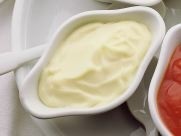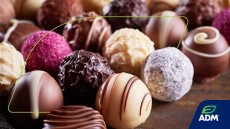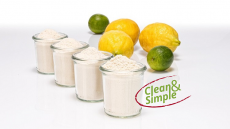Water-in-oil-in-water emulsions to offer low-fat options?
water-in-oil-in-water emulsions could offer significant potential
for low-fat products, and novel encapsulation systems.
Work by Julian McClements from the University of Massachusetts and collaborators from Loughborough University in the UK report that such research has great potential for low fat products with good sensory properties.
Talking exclusively to FoodNavigator.com, Professor McClements said the work could lead to a reduction in the fat content in products like mayo, salad dressings, sauces and dips. The researchers have already submitted a patent.
The new research, published in the Journal of Agricultural and Food Chemistry, taps into growing interest in the development of water-in-oil-in-water (W/O/W) emulsions and looked at forming a gelled biopolymer particle in a water-in-oil emulsion.
Current application of the technique is limited due to difficulties with the stability of the internal water droplets, a problem that could be solved by gelling the internal water phase.
The researchers prepared 20 weight per cent water-in-oil emulsions that were stabilised by polyglycerol polyricinoleate (PGPR), a non-ionic surfactant, to prepare emulsions containing either zero and 15 per cent whey protein isolate (WPI) in the aqueous phase. The WPI emulsions were heated to form a gel.
No significant differences were observed between the WPI-containing emulsion and the WPI-free emulsion, said the researchers.
W/O/W emulsions were then produced using one of two homogenizing techniques - membrane homogenizer (MH) or a high-pressure valve homogenizer (HPVH) using an aqueous Tween 20 solution and retained more than 95 per cent of the water droplets inside the oil droplets. The researchers report that the HPVH technique led to smaller droplets, while the MH technique produced larger particles but with a smaller size distribution.
"The major factor affecting the mean droplet size in the W/O/W emulsions was the type of homogenizer used and the operating conditions," wrote Surh.
While gelling the internal phase of the water particle did not appear to affect W/O/W emulsion formation, the gelled internal water phase may be improve the stability of the resulting emulsion.
"This study has shown that W/O/W emulsions can be produced using either a high-pressure valve homogeniser or a membrane homogeniser that contained a gelled internal water droplets," concluded Surh.
The work could also lead to novel encapsulation systems for flavours to be released in the mouth or nutritional ingredients to be released during digestion, said the researchers.
"Water soluble components could be encapsulated in the inner water phase, and released in the mouth or stomach in response to some environmental change (pH, Ionic strength, temperature)," McClements told FoodNavigator.com.
Work is on-going and McClements said that on-going challenges include "trying to make it stable for a reasonable time to use in foods, using food grade ingredients and processing operations that are cost effective."
Source: Journal of Agricultural and Food Chemistry ASAP article, on-line ahead of print, doi: 10.1021/jf061637q "Preparation and characterisation of water/oil and water/oil/water emulsions containing biopolymer-gelled water droplets" Authors: J. Surh, G.T. Vladisavljevic, S. Mun, D.J. McClements






















